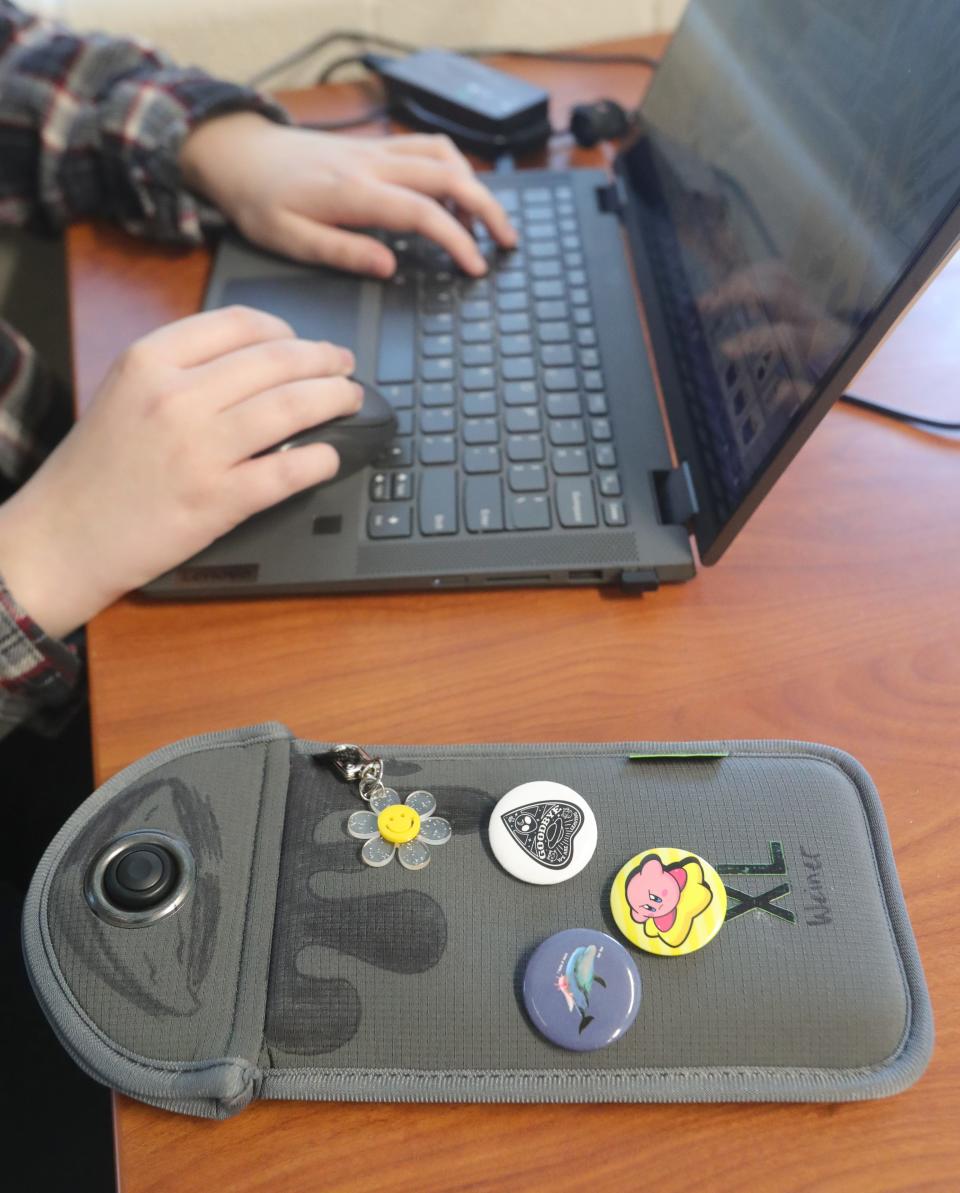Cincinnati Public Schools is pursuing cellphone pouches for every student in the district following a pilot program at Hughes STEM High School last year. With Yondr pouches, students are locked out of their phones during the school day without having to turn them in to teachers or other school staff.
It will be up to individual principals whether to use them.
Some comedians and musicians have venues use the pouches to prevent attendees from snapping photos or livestreaming their sets during performances. But schools have latched on to the product in recent years as concerns and research mount against youth cellphone use and its impact on learning and mental health.
Ohio Gov. Mike DeWine is pushing districts across the state to put cellphone bans in place. Akron Public Schools adopted Yondr pouches last year. Some schools in Cleveland did the same for kids in third through eighth grades. Cincinnati Country Day School in Indian Hill doesn’t use the pouches but implemented a strict no cellphone policy at the start of last school year with positive feedback from students and teachers alike.
More: An Ohio school banned cellphones. Turns out students actually like it
Cincinnati Public Schools is not requiring every building in the district to adopt a no cellphone policy or even use the pouches. But after an encouraging presentation by Jennifer Williams, principal at Hughes, on the positive impacts of Yondr last school year, the board updated its phone policy to allow school principals to take students’ phones or lock them up during the school day.
“I would like, personally, every school to do what Hughes has done,” Ben Lindy said before the board unanimously passed the updated policy. Board President Eve Bolton agreed.
Williams answered committee and Enquirer questions about the Yondr pouches. See her responses below.
Cyberbullying prevalent before Yondr pouches
Cyberbullying was rampant at Hughes before the school switched to a cellphone free environment, Williams said. Students were sending messages to each other and filming other students without their consent. Even kids who weren’t on social media were targets of the online bullying.
“We also experienced false information being shared with students,” Williams said. “Airdropping of threats in the building or in the community that weren’t real.”
Are Yondr cellphone pouches reliable?
Williams said many students learned from YouTube videos how to break open their pouches to get to their phones during the school day.
But Hughes came up with a solution.

At Hughes, kids are responsible for turning in their pouches at the end of the day. If the pouch is broken or a student is caught with their phone during the school day, the student’s phone is confiscated until an adult family member comes to pick it up.
That inconvenience alone dissuade students from trying to outsmart the policy, she said.
How did students respond to cellphone lockup?
For the most part, kids were OK with their cellphones being locked up as long as they had them with them during the school day, Williams said.
Occasionally teachers and staff still found kids who violated the policy, hiding their cellphones in shoes and other obscure places.
“But it still met the purpose. They dared not take their cellphones out during instruction and during our academic school day,” Williams said.
What was the academic, social impact of phone restriction?
Hughes saw improved academic achievement in freshman, improved engagement, less fighting in the halls and overall better culture in the school building.
Can kids still reach their families during the school day?
Yes.
Families can call the school to speak with their child, and students can go to the office and request to use the phone to contact their family at any time, Williams said, “no questions asked.”
Students can also use school phones in their counselor’s office and at the nurse’s office. These offices can also unlock the Yondr pouches for students in emergency situations.
How much does it cost?
To purchase Yondr pouches for all high school students, the district would spend about $500,000. This would be taken out of Title IV funding, which is awarded by the U.S. Department of Education to help improve school conditions for learning.
“The cost is really nothing for what will be returned in terms of school culture,” interim Superintendent Shauna Murphy said during a recent school board meeting.
The district is still working out the purchase details.
This article originally appeared on Cincinnati Enquirer: Cincinnati school board supports cellphone ban for students
Signup bonus from




